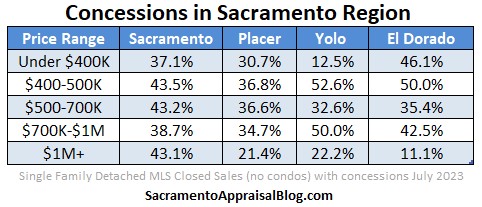Consumers are feeling economic pain, and we need to talk about some of the things that are brewing. Today, I want to look at growing debt, distressed sales, and unemployment. I have both national and local stats. Sounds like a happy post, right? Look, some people really hype this topic and use it to magnify doom, but let’s talk about the market that actually exists.

UPCOMING SPEAKING GIGS:
5/9/24 Empire Home Loans (register here)
5/15/24 KW Roseville Event
6/5/24 Marketing Mastermind (register here)
6/6/24 Golden 1 Credit Union (details TBA)
6/11/24 Elk Grove Regional MLS Meeting 8:30am
6/13/24 Sacramento Realtist Association (details TBA here)
6/21/24 Exporting data from MLS (details TBA)
9/17/24 Downtown Regional MLS Meeting Q&A 9am
9/20/24 How to Think Like an Appraiser class (details TBA)
10/18/24 Prime Real Estate (private)
10/29/24 Orangevale MLS Meeting

MORTGAGE DELINQUENCIES ARE REALLY LOW
First off, we don’t have a big problem with mortgage delinquencies, but there is a little bit of an uptick. Basically, depending on the data source, delinquencies have inched up very slightly. This is something to watch, but it’s important to not amplify the small change to promote a narrative. Visuals from Calculated Risk, NY Fed, and ICE Mortgage Technology.





GETTING INTO CREDIT TROUBLE NATIONALLY
Consumers are getting into debt and missing payments for credit cards and auto loans in particular. We may not be in mortgage trouble right now, but some people may need to solve their financial problems by selling a home. However, people will fight to keep homes with low payments. In other words, letting go of a home to solve debt seems like a last-case scenario.

CREDIT & AUTO TROUBLE IN SACRAMENTO
These visuals come from the California Policy Lab credit dashboard. What I like is this is Sacramento only instead of a national stat that may or may not apply to the local area. Credit card delinquencies are above pre-pandemic levels. You can click on the link to play around with different areas of California as well as seeing which age groups are in the most trouble.

Auto delinquencies are also ticking up in Sacramento.

SHORT SALES AND FORECLOSURES HARDLY EXIST
In the local market, distressed sales barely exist. Technically, 1% of all sales during the first quarter of 2024 were distressed, but that’s 1% of a really low number (low volume is the reality in the market right now). Basically, both bank-owned sales and short sales are inching a little closer to pre-pandemic levels, but not quite back there yet. In short, we should see more distressed sales ahead since there is no longer a foreclosure moratorium, and there is no place to go but up. We have truly bottomed out.



HELLO THERE CREDIT REPAIR
Some people ahead are going to need to repair their credit, so I think it’s important for the real estate community to have solid credit repair contacts and help consumers understand the process. Honestly, I’d love to see more reels and posts about this, especially since we’re seeing credit and auto delinquencies rising.
WHAT SHORT SALES ARE HAPPENING THOUGH?
Here are current short sale active listings and pendings in the region. Keep in mind these listings represent 0.3% of all properties, so this is a tiny sliver of the market. What can we learn though? Well, it looks like there are some older loans with carnage, and a handful of reverse mortgages where the owner likely died and the lender is taking the property back (normal to see). The thing that is more striking is that about half the loans originated when the market was priced higher in 2022. Again, this is a tiny sliver of the market, but if you work in real estate, take clues here that some people might need your help. For whatever reason, these people needed to sell instead of hold on.

WHAT PROPERTIES ARE BANK-OWNED?
There are few bank-owned (REO) sales right now, but when they happen, they’ve been a combination of older loans and some newer ones (but not really people who bought in 2022 at peak prices). Remember, people can go into foreclosure for so many reasons, and it’s not just about prices in the market. In many cases, it’s about a personal financial situation. On a side note, I’m definitely noticing some familiar agents listing bank-owned homes right now (mostly people who were big REO agents back in the day).

LET’S WATCH UNEMPLOYMENT
We’ve seen an uptick in unemployment. This is nothing to hype since it’s very low right now, but it is something we want to watch and NOT ignore. As can be seen, Sacramento and California have a similar vibe through the years.

Here are six local counties. All ships rise and fall with the tide, right?

And this one is a sincere hot mess when adding in three more local counties. Honestly, this graph is too much since these areas are too different, but sometimes I like to share examples of chaos on my desk.

CLOSING THOUGHTS
It’s important to watch any red flags in the housing market, but it’s also key to stay objective. I find the tendency online is to highlight a trickle of doom and make it sound like an avalanche. There is no integrity in that. Likewise, some real estate professionals only want to talk about the glowing stuff rather than some of the issues we’re seeing right now. Overall, we don’t have a distressed market, but let’s keep our antennas up about all of this while actively cultivating objectivity. And if you work in real estate, be prepared to serve clients in all stations of life. The good times and the hard times.
Questions: What stands out to you most above? Anything to add? What did I miss?
If you liked this post, subscribe by email (or RSS). Thanks for being here.









































 Skim or digest slowly.
Skim or digest slowly.






















